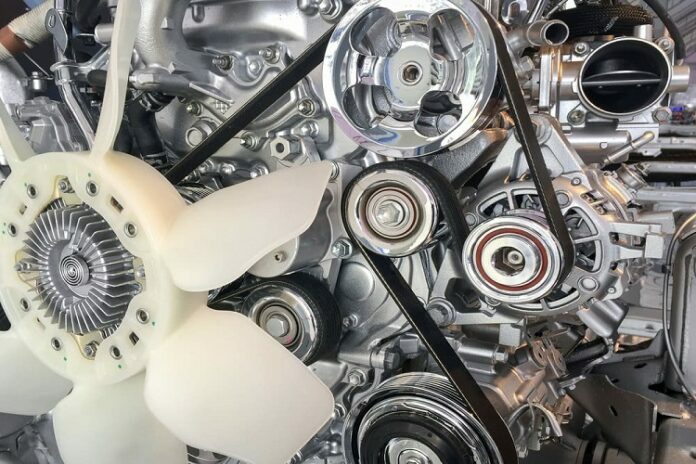V-belts appear like a simple part of the equipment, but they are the most glorified rubber band. Are you looking for the correas trapezoidales replacement? You just have to measure the width & circumference, and get another belt that has similar dimensions, and slap this on a drive.
Like the synchronous belt, V-belts also have undergone huge technological advancement since their invention. The new synthetic rubber elements, construction techniques, cover materials, tensile cord make, as well as cross-section profiles actually have led to a wide range of the V-belts, which are application-specific as well as deliver great performance.
Function of V-belts
V-belt generally acts as the transmission belt. By connecting V-belt pulleys, transmits the force from an engine to ancillary components that includes an alternator, hydraulic pump for its power steering:
- Hydraulic pump
- AC compressor
- Power steering
- Water pump
- Fan
In the combustion engine, combustion of fuel or air mixture drives the pistons through connecting rods; the movement of such pistons in the straight line will be converted in the rotation of a crankshaft.
Pitch length or datum length – Make your choice
Pitch length will be tough to measure straight, mainly because it’s based on a pitch line of the belt. The pitch line with “circumferential line keeps the same length when a belt gets bent perpendicularly to the base. Thus, the pitch line is a line internal to a belt, which doesn’t change its length when the belt is in the use. The diameter formed on a sheave by pitch line is the sheave’s pitch diameter.
The belt’s pitch line generally corresponds to the internal tensile cord. However, improvements in the belt construction now have moved the tensile cord to the location much higher in a belt. It resulted in the changes to the belt’s pitch length & to the sheave’s pitch diameter. The design change provides the tensile cord the higher moment arm & support below this for transmitting enough forces to sheave walls.
Final Words
V-belts are mainly used in industrial applications due to their low cost, simple installation, and many different sizes. Its V-shape makes this belt simple to keep belts in the sheave grooves than to keep the flat belt on the pulley. One biggest operational benefits of the V-belt is wedging action in a sheave groove. The geometry multiplies its low tensioning force and increases the friction force on pulley sidewalls. This is the reason you must choose the right V-belt from a trusted supplier.















